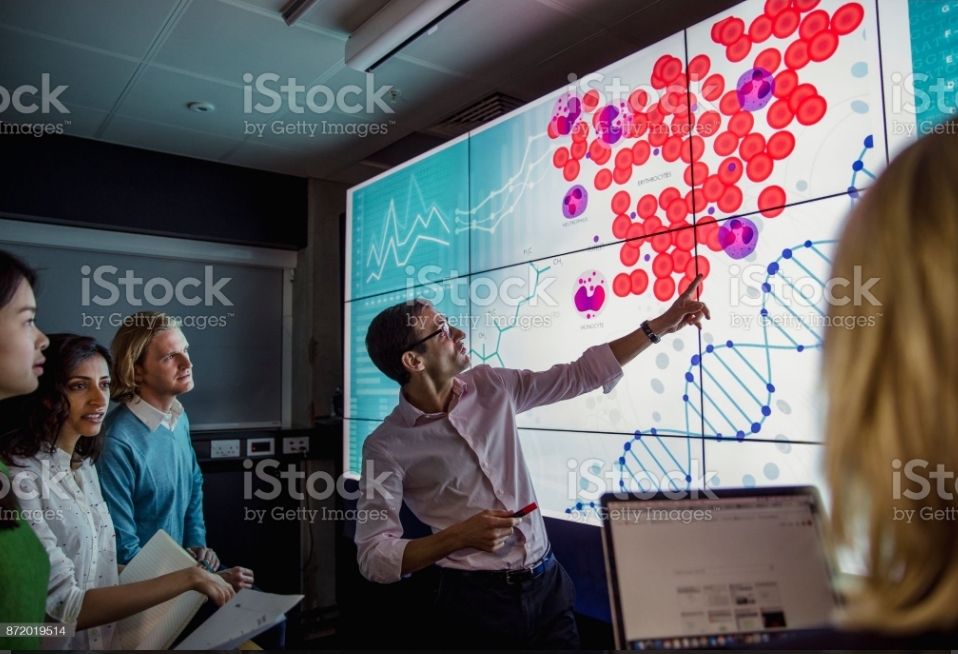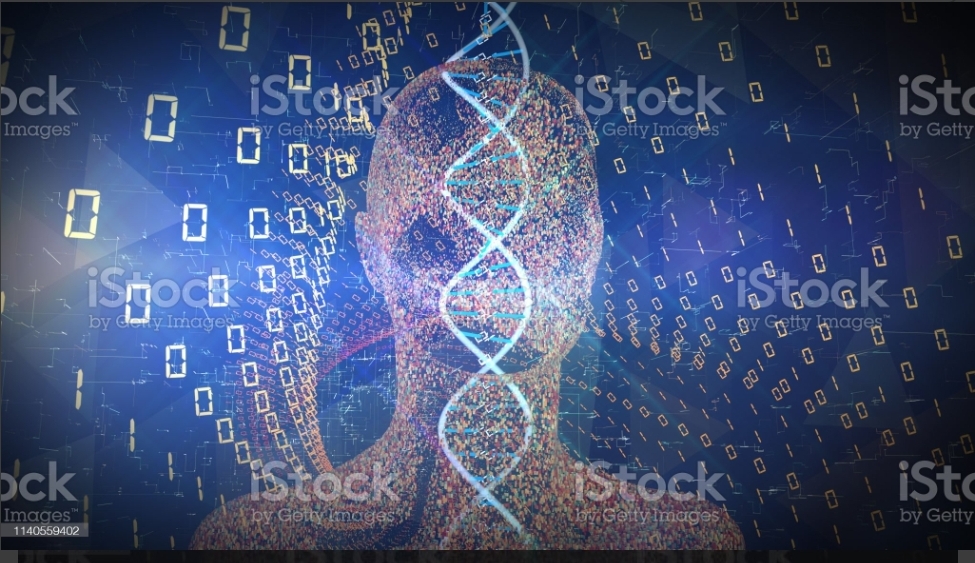What is DNA Computing and How Does It Work?
DNA computing is a kind of natural computing that uses the molecular characteristics of DNA to conduct logical and arithmetic operations instead of typical carbon/silicon chips. This enables massively parallel computation, making it possible to answer difficult mathematical equations or problems in a fraction of the time. As a result, computation is far more efficient with a large volume of self-replicating DNA than with a standard computer, which would require a lot more hardware.

To create algorithms for DNA computing, you’ll need a lot of biology and computer science skills. Instead of binary digits, information or data will now be kept in the form of the bases A, T, G, and C. The capacity to generate short DNA sequences artificially allows these sequences to be used as inputs for algorithms.
Quantum computing vs. DNA computing
It’s no surprise that the amount of data we generate on a global scale is rapidly increasing. But where are we going to put it? And how do we deal with it?
One method is quantum computing. (You can read more about it here.) However, quantum has a lot of difficult difficulties to address.
Quantum computing, for example, necessitates an incredibly cold operating environment – so cold that atoms come to a halt. The temperature must be below 1 degree Kelvin, which is -272 degrees Celsius or -450 degrees Fahrenheit. This particular environment necessitates massive quantities of energy and cutting-edge technology.
Transistors within computers send electrical impulses to one other in order to show you that humorous laughing llama video (or whatever else you prefer to watch). Quite a few.
The transistors in today’s CPUs are becoming very small, measuring only a few nanometers in length. If transistors are made any smaller than they are now, the electrical current flowing through them can easily leak out into other neighbouring components or cause the transistor to deform due to the heat generated. If this happens, you’ll end up with messed-up currents that don’t do anything. Computing innovation may come to an end.
Although quantum computing is receiving more attention these days, DNA computing offers another approach of expanding processing power that can rival or even exceed quantum computing. When comparing a DNA or bio computer to a quantum computer, DNA computing has the advantage of being potentially more stable.
The development of DNA computing
DNA computing isn’t a brand-new idea. “Expressed novel concepts and principal concerns of radical miniaturisation on elements for recording, saving, and retrieving of digital information to the molecular-atomic level,” Russian physicist Mikhail Samoilovich Neiman wrote in 1964. To put it another way, DNA computing.
The first real DNA computing development began in the 1990s, with the storage of data on DNA strands. The TT-100, which was essentially a test tube, was described by Leonard Adelman as the first prototype of a DNA computer.
The abbreviation “TT” stood for “Test Tube.” This isn’t a joke.
“What does a DNA computer look like?” you might wonder. The TT-100, on the other hand, might have given us a hint. When DNA is mixed and matched inside a test tube, the actual computing takes place.
Is it feasible to programme DNA?
Yes, DNA computing is a viable option. Microsoft and University of Washington researchers unveiled the first completely automated system for storing and retrieving data in synthetic DNA in 2019. “Hello,” they wrote (drum roll, please).
It’s not nearly as spectacular as Shakespeare’s literary works or the world’s best pizza recipes, but it was done with invented DNA, so that’s something.
The ultimate goal is to shrink data centres down to the size of a warehouse. The best part is that the end user will never know the difference; storage will just be storage. In terms of storage, University of Washington researchers have so far managed to store one gigabyte in DNA.
Cryptography’s security and DNA computing
Data security is one area where DNA computing will be quite beneficial. DNA-based security may sound like a bad plot from a low-budget sci-fi film, but it’s real… or will be soon.
Using a private and public key, DNA-based cryptography operates similarly to traditional cryptography. However, because DNA cryptography is extremely fast, the keys can be extremely large.
Applications
- Leonard Adleman proposed the first theory of DNA computation in 1994. With a seven-point Hamiltonian path problem, often known as the travelling salesman problem, he put his experimental theory to the test. In this task, the salesman must discover the shortest journey between seven cities with known distances, crossing no city twice and returning to the originating city. Each city was represented by a short DNA sequence of roughly 20 bases, with a complementary strand of 20 bases serving as the street between them.
- All of the fragments can connect to one another. The intrinsic bonding tendencies of DNA formed 109 forms or solutions in less than a second when the fragments were placed in a tube and combined. He spent a week extrapolating and filtering out the shortest path using multiple strategies because not all of them were correct.
- Despite the fact that this approach was not optimal, it did open the door to a vast range of possibilities and uses. A handful of the applications in development are listed below.
- Security
The most recent advancement is the use of DNA algorithms in cryptography to construct an intrusion detection model. The ability to store 108 terabytes of data in a single gramme of DNA has led to the possibility of creating a massive one-time pad. Another example is DNA steganography, where messages in a microdot were hidden using a novel method. Instead than using binary encoding, each letter was represented by three chemical bases, such as CGA for the letter A. These messages are then encoded as DNA sequences and hidden by mixing them with a vast amount of sonicated random human DNA in a tube.
This resulted in the production of microdots, which the receiver decoded using the necessary primers (short sequence with complementary bases). However, there have been issues with such encryption techniques. The lack of a theoretical foundation for explaining implementation and developing excellent schemes appears to be a problem. These are also costly to implement and analyse, and they necessitate contemporary infrastructure.
- Scheduling
Zhixing et al. introduced a DNA computing-based solution to tackle the employment scheduling problem. He illustrated the working processes, mirroring the manner used for the Hamiltonian Path problem, in order to describe the model with six tasks.
Watada employed DNA algorithms to work out elevator schedule systems and rearrangement of Flexible Manufacturing System in the early 2000s, and this was not the first time. Only medium-sized jobs were considered due to a lack of theoretical grounding.
- Clustering
Clustering is the process of constructing a structure from a complex collection of data in order to derive highly meaningful relationships. It involves a variety of concepts and algorithms. Edges and vertices are assigned using strands in DNA-based clustering. To increase quality, iterative calculations are conducted for each created cluster. When dealing with vast amounts of heterogeneous data with an uncertain number of clusters, this strategy is particularly useful. Due to DNA’s great parallelism, it aids in lowering time complexity.
Advantages Of DNA computing
The usage of DNA strands to compute has resulted in high parallel computation, which compensates for the chip’s slow processing. When compared to traditional storage systems, DNA requires just about 1 bit per cubic nanometer of memory space. The chemical bonds in DNA produce energy to build or repair new strands, so there is almost no power consumption.

- It is inexpensive.
At scale, it has the potential to be low-cost. Because DNA is found in every cell of every living creature, there is potentially plenty of supply. However, because DNA computing does not use actual human DNA but rather artificially manufactured DNA, production is now the biggest roadblock. However, once the economic scales tip in our favour, DNA for computing will be quite affordable to produce.
- It’s simple to make.
It’s something we do all the time. When it comes to DNA manufacturing, DNA naturally wants to multiply, therefore it’s only a matter of leveraging this natural propensity in an artificial setting.
- It’s adaptable.
Is DNA storage scalable? According to scientists, DNA has the capacity to store 455 exabytes of info. Eight quintillion bytes, or one billion gigabytes, make up an exabyte. Every movie ever made would fit inside a volume smaller than a sugar cube if it were formatted in DNA! (Just keep it out of your coffee.) Oops.)
- Solutions for parallel computing
DNA has the ability to conduct a large number of calculations in simultaneously. Unlike traditional computing, which quickly reaches a limit on the number of concurrent computations that can be performed, DNA computing has virtually no such limit. For cases like machine learning, this makes it tremendously quick and powerful.
DNA-based computing’s drawbacks
- Cost at the moment
Before you can buy your own DNA computer and load it with all of the internet, the cost of DNA computing must drop dramatically. The cost of storing and encoding one megabyte of data, for example, is currently $1 million. And, in truth, a personal DNA computer may never be conceivable. The future of computing is super-fast connectivity to the cloud and other services, not super-powerful devices in your pocket. DNA computers will perform massive calculations and store massive amounts of data in support of, not in place of, our personal computers.
- For simple functions, performance is slow.
While DNA computers excel at complex activities that need several processes at the same time, they may be less efficient than silicon computers when competing for basic, sequential jobs.
- However, the output of such a computation would necessitate the use of complex and expensive equipment. Errors in DNA synthesis, such as mismatching breaks, are also common. With each loop, the chance of errors grows exponentially, reducing the reliability.
- Perspectives for the future
The field of DNA computing is still in its early stages, and its applications are still being explored. DNA computing can be used in medical devices to create new detection methods by interacting with living cells. With the rise of flexible molecular algorithms, a reprogrammable tile set might be used to create a complex object on the nanoscale. Though replacing silicon chip-based computers in the near future is doubtful, the concept of solving problems beyond the limits of conventional computers opens up a world of possibilities.
Why is DNA computing a component of the technological future?
DNA computing promises low-cost, large-scale data storage as well as an exponential increase in computing power and speed.
However, there are still significant obstacles to overcome, not the least of which is the cost of manufacturing DNA. However, we are already past the proof-of-concept stage, and real money is being spent to develop actual commercial DNA cryptography solutions for cloud computing and network security.
Conclusion:
DNA, the genetic code of life, has been the molecule of this century and will undoubtedly be the molecule of the next. Speed, automation, and miniaturisation are the keys to the future of DNA manipulation. It may not be good enough to play games or surf the web, as typical computers are, but it might be useful in the study of logic, cryptography, genetic programming and algorithms, automata, and a whole host of other things that have yet to be conceived!!
As a result, it is not an exaggeration to say that DNA computing is the technology to watch in the coming years, as it is unquestionably here to stay.


